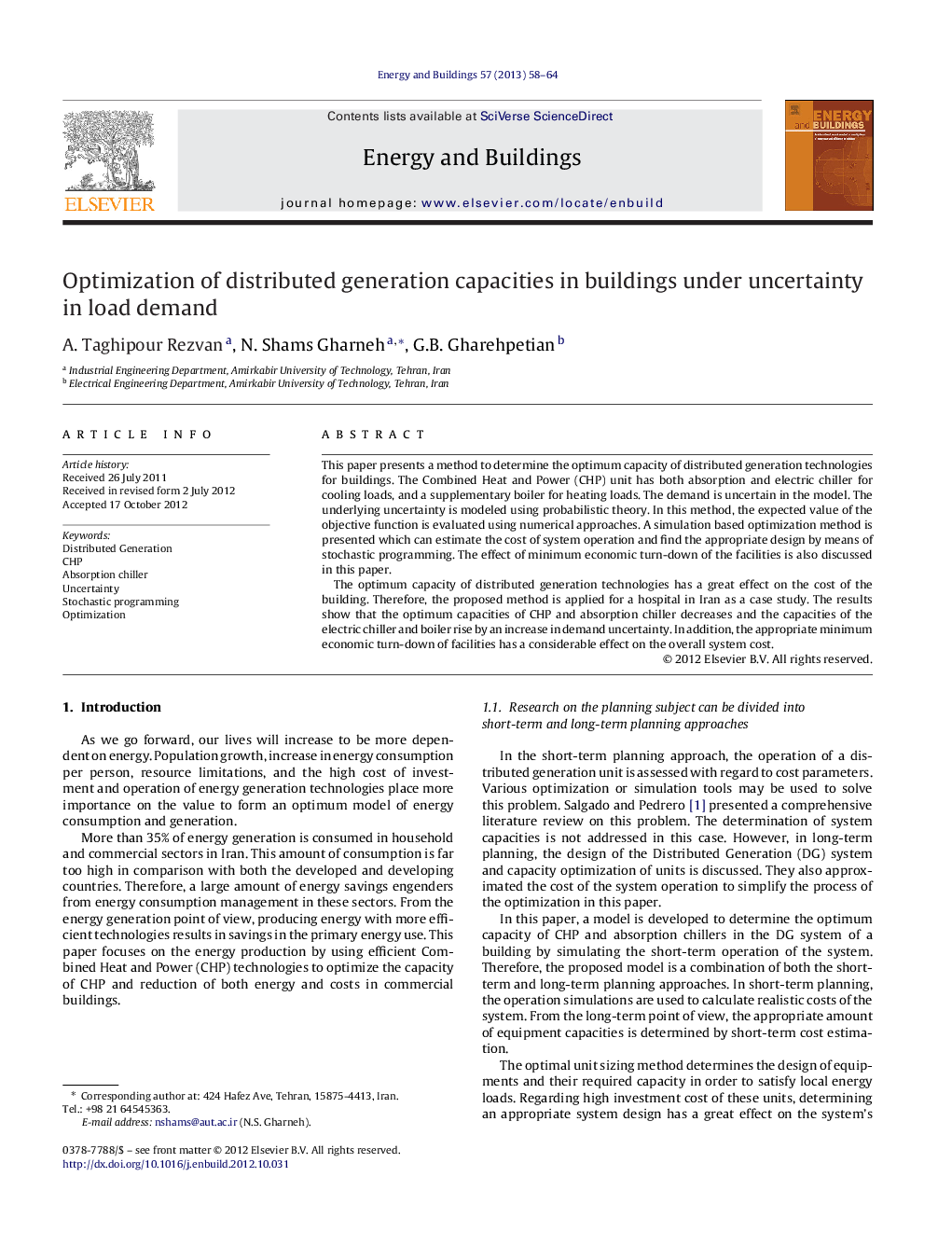| Article ID | Journal | Published Year | Pages | File Type |
|---|---|---|---|---|
| 263563 | Energy and Buildings | 2013 | 7 Pages |
This paper presents a method to determine the optimum capacity of distributed generation technologies for buildings. The Combined Heat and Power (CHP) unit has both absorption and electric chiller for cooling loads, and a supplementary boiler for heating loads. The demand is uncertain in the model. The underlying uncertainty is modeled using probabilistic theory. In this method, the expected value of the objective function is evaluated using numerical approaches. A simulation based optimization method is presented which can estimate the cost of system operation and find the appropriate design by means of stochastic programming. The effect of minimum economic turn-down of the facilities is also discussed in this paper.The optimum capacity of distributed generation technologies has a great effect on the cost of the building. Therefore, the proposed method is applied for a hospital in Iran as a case study. The results show that the optimum capacities of CHP and absorption chiller decreases and the capacities of the electric chiller and boiler rise by an increase in demand uncertainty. In addition, the appropriate minimum economic turn-down of facilities has a considerable effect on the overall system cost.
► We modeled optimizing the capacity of DG technologies for buildings. ► The uncertainty is modeled using probabilistic theory. ► A simulation based optimization method is presented. ► The optimum capacities of CHP and absorption chiller decreases. ► The capacities of the electric chiller and boiler increases.
